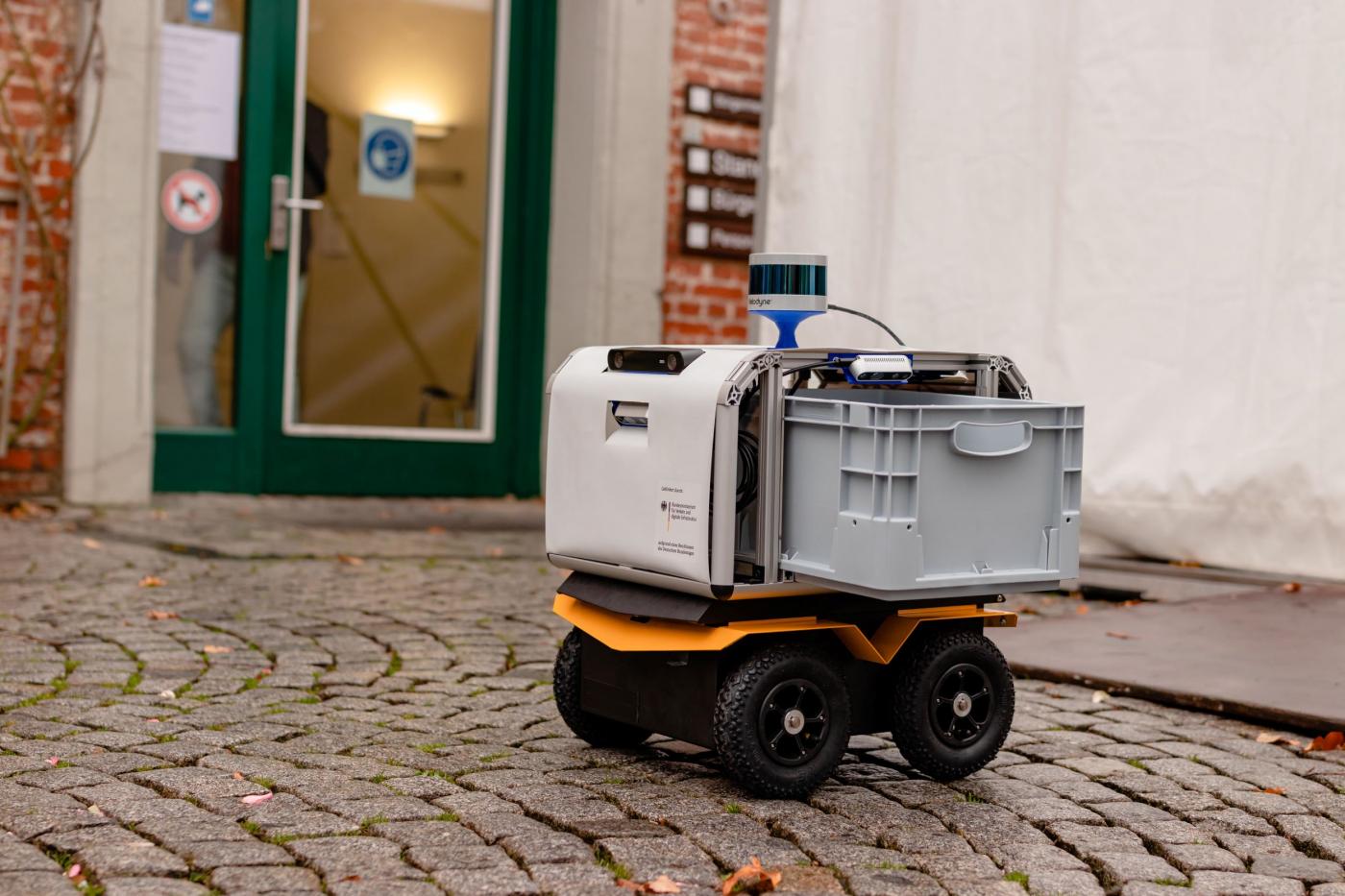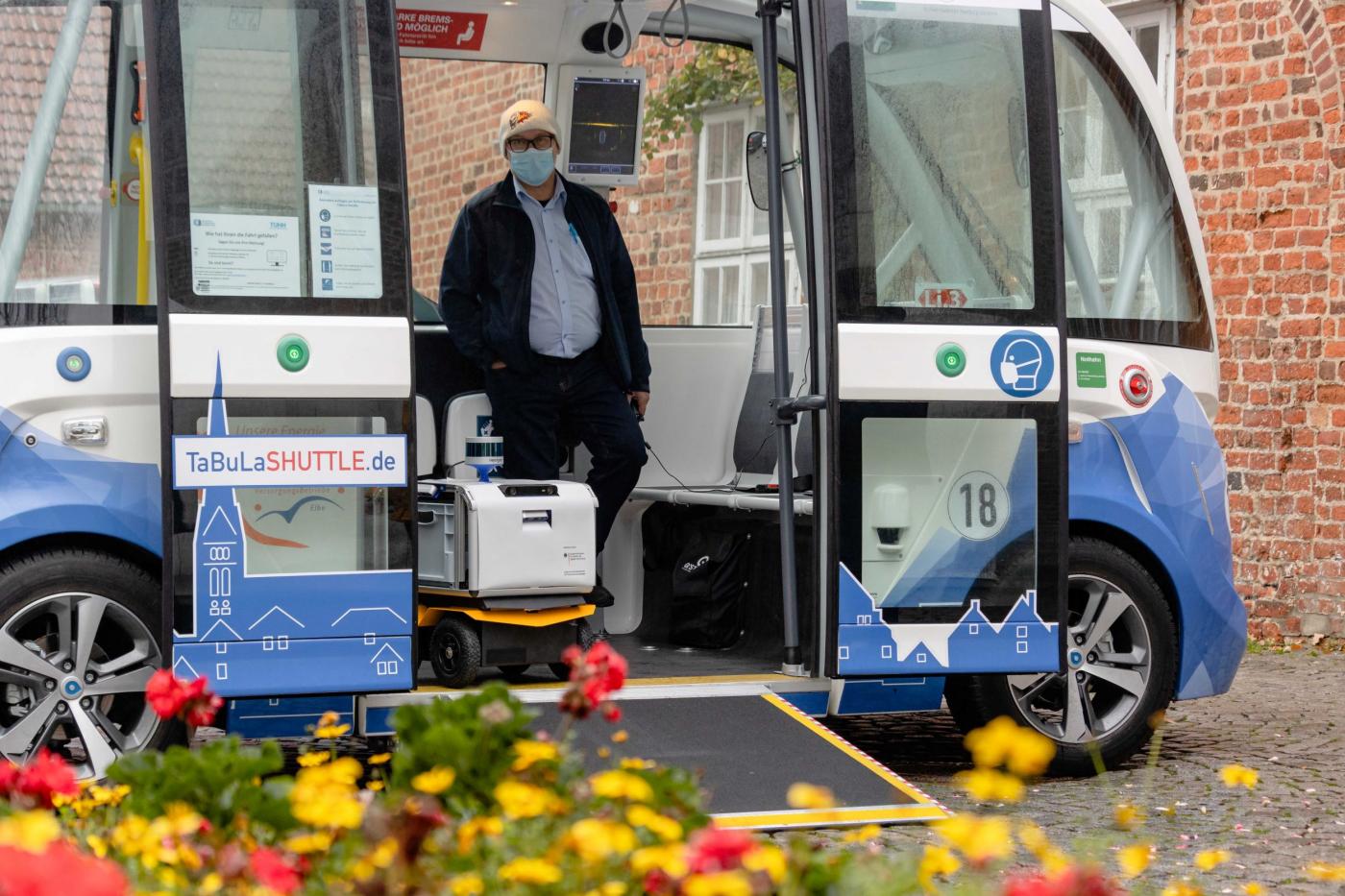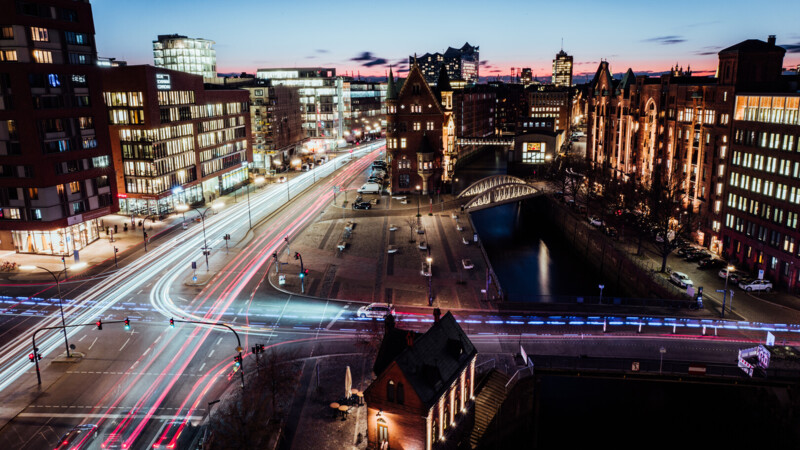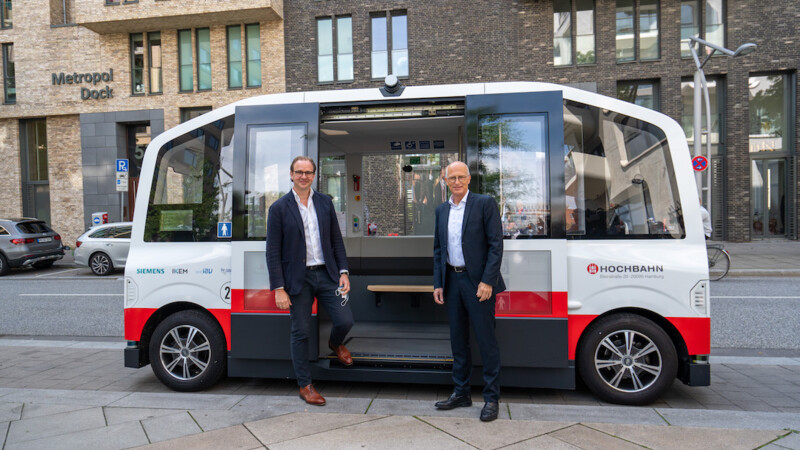"Laura transports post for various authorities," said Dr Johannes Hinckeldeyn, Technical Manager of the project "Lauenburg's Automated Robot Delivery". The combined transport of people and goods in automated shuttles is being tested in Lauenburg as part of TaBuLa-LOG (Test Centre for Autonomous Buses in the Duchy of Lauenburg County) and was developed by the Institute for Technical Logistics at the Technical University of Hamburg. The combination of an autonomous shuttle and a bus-driving robot is unique so far, Hinckeldeyn stressed and is one of 42 anchor projects to be presented during the ITS World Congress underway from October 11-15, 2021 in Hamburg.
Robots are likely to become everyday soon. Yet, meeting them on a bus can make for a peculiar encounter unless you happen to be in Lauenburg in the Hamburg Metropolitan Region. The driverless TaBuLa shuttle minibus releases ramps at bus stops to let "Laura" the delivery robot on board. Then, passengers find themselves travelling with a robot.
ITS anchor project "TaBuLa-LOG"

Up close and personal with a robot
Apart from the technical feasibility, researchers are focusing on public acceptance of the project, which runs through late 2022. "How do people react when a robot comes aboard making for a close encounter? Laura has several sensors to gauge such contact. For basic navigation, a laser scanner on the top of the robot is linked with a map," Hinckeldeyn pointed out. "Additionally, 3D close range stereo cameras identify street lanterns or parked cars and two stereo cameras scan the safety area so Laura can stop immediately, if need be." Fine positioning allows the robot to board the bus from a ramp. "Ultrasonic sensors navigate centimetre by centimetre and ensure that Laura doesn't accidentally run over a dog's tail," he grinned.

Public transport to extend robot's delivery range
Given the boom in online sales and deliveries, Laura could ultimately reduce the volume of traffic. Public transport could extend the robot's parcel delivery range. "The TaBuLa shuttle acts as a mother ship, drives the delivery robots close to their actual destination, lets them off at bus stops to drive the last mile. The robot delivers the goods and gets back on the bus again," Hinckeldeyn noted. The shuttle thus extends the robot's delivery range.
Laura at the ITS World Congress
The choice of Lauenburg was by no means coincidental. "The TaBuLa-Shuttle project, which started in 2018, tests autonomous driving in small towns," said Hinckeldeyn. The medieval old town with wide pavements, narrow alleys, winding streets and long, steep hills and a busy main road dotted with traffic lights poses several interesting challenges for researchers. Tests of the delivery robot's driving behaviour on Lauenburg's cobblestones are underway, but an attendant still has to steer Laura manually. "At the same time, we are rolling out the various functions of autonomous driving and are working on legal approval." Everything should be ready in time for the ITS World Congress, which should be another challenge for Laura. "Let's see how Laura navigates a sea of legs," he remarked.

Part of Hamburg's ITS strategy
The TaBuLa, TaBuLa-LOG and Laura projects are among ITS research projects underway in the Hamburg Metropolitan Region. They have received EUR 3.7 million in funds from the German Ministry of Transport and Digital Infrastructure as part of the "Automated and Connected Driving" and "Sustainable Mobility System for the Future through Automated Driving and Networking".
ys/sb/pb
Sources and further information
ITS World Congress Hamburg 2021
The leading ITS World Congress on intelligent transport gets underway in Hamburg under the theme of "Experience Future Mobility Now" from October 11 to 15, 2021. The Hanseatic city and its partners will present the latest trends in digitalisation, mobility and logistics. Emphasis will be on networked transport and smart logistics of the future. Visitors can glimpse the future on the free public day on October 14, 2021. Those interested must have registered earlier. The city has earmarked 42 out of 200 ITS projects as anchors that are particularly important for achieving its objectives. These so-called anchor projects include the Hamburg Electric Autonomous Transportation (HEAT) autonomous shuttle bus and the cycle traffic counting network with thermal imaging cameras. The ITS World Congress is part of the strategy adopted by the senate in 2016 through 2030.
More
Similar articles

Real lab in Hamburg speeding up path to mobility transition

All aboard as autonomous HEAT bus enters last phase

University of Lübeck’s robot to encourage good hand hygiene
